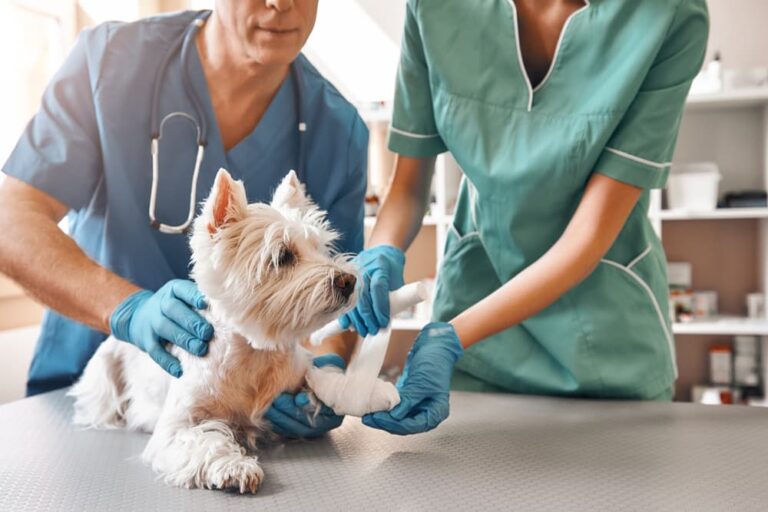
As a dedicated pet owner, you always want what's best for your furry companion, especially in times of illness or distress. While it's natural to be concerned, there are specific situations that warrant an immediate trip to the emergency room (ER) for your pet. We've consulted Dr. Tannetje Crocker, an experienced emergency doctor at Veterinary Emergency Group in Fort Worth, Texas, to shed light on the ten health issues that should prompt a visit to the ER.
Respiratory Distress:
Symptoms: Rapid or labored breathing, open-mouth breathing in cats, increased effort in breathing, or a purple tongue or gums.
Treatment: ER vets provide supplemental oxygen, perform imaging to diagnose the issue, and administer sedation when necessary. Further treatment depends on the cause.
Bites or Deep Cuts:
Symptoms: Deep wounds or large lacerations.
Treatment: Cleaning and antibiotics for superficial bites; anesthesia, thorough cleaning, exploration, and sutures for more severe injuries.

Extreme Vomiting:
Symptoms: Frequent vomiting or vomiting blood.
Treatment: ER vets conduct exams and diagnostic tests to identify the cause of vomiting. Treatment varies based on the diagnosis.
Heat Stroke:
Symptoms: Lethargy, rapid panting, diarrhea, and a temperature over 104°F.
Treatment: ER vets focus on cooling down the pet's body temperature with intravenous (IV) fluids and fans. They also address potential complications.
Back Injury:
Symptoms: Mobility issues, stiffness, and vocalization.
Treatment: Pain management and confinement may be necessary for acute back injuries. Severe cases may require surgical assessment.
Internal Bleeding:
Symptoms: Weakness, breathing difficulties, and a swollen abdomen.
Treatment: Ruptured organ masses often necessitate surgery. In other cases, supportive care, blood products, and time may be required.

Ingesting a Toxic Substance:
Symptoms: Gastrointestinal issues, behavioral changes, and tremors.
Treatment: Prompt medical attention is vital. Inducing vomiting is often recommended if done quickly, while monitoring and treatment are required to manage potential side effects.
Parvovirus:
Symptoms: Body temperature abnormalities, gastrointestinal distress, and behavioral changes.
Treatment: Hospitalization for aggressive supportive care, including fluids, anti-nausea medication, GI protectants, antibiotics, and sometimes blood products.

Hypoglycemia (Low Blood Sugar):
Symptoms: Behavioral changes, mobility issues, and involuntary movements.
Treatment: Administering Dextrose can rapidly increase blood glucose levels. It may be needed until the pet stabilizes.
Continuous Seizures:
Symptoms: Convulsions, foaming at the mouth.
Treatment: Immediate ER attention is vital if your pet experiences prolonged seizures. Long-term seizure control may require medication for epilepsy.
When your pet exhibits any of these concerning signs, it's essential to act swiftly and seek professional veterinary care at the emergency room. Your pet's well-being and safety are top priorities, and timely action can make all the difference in their recovery.
Tags:
DOG
